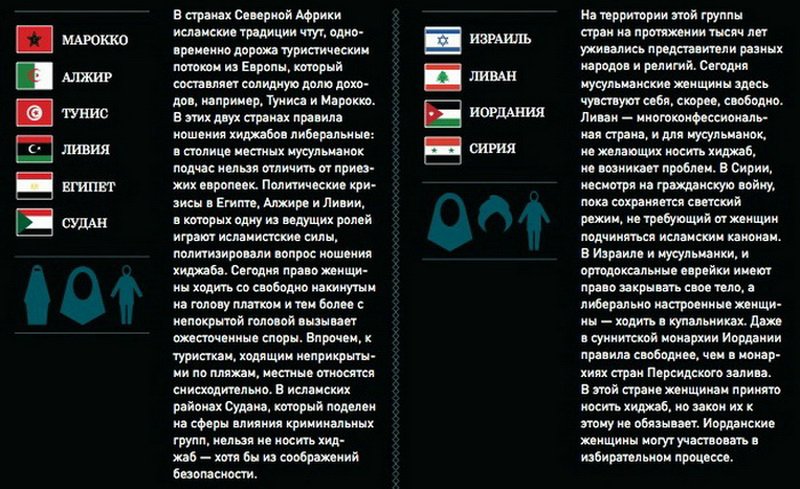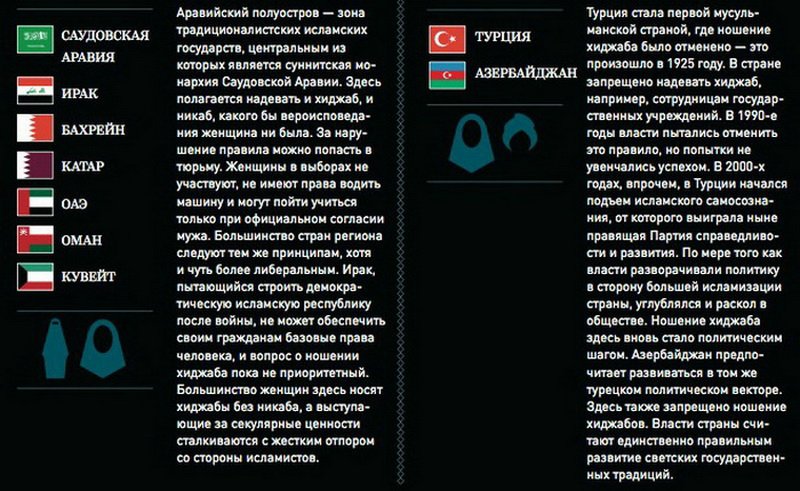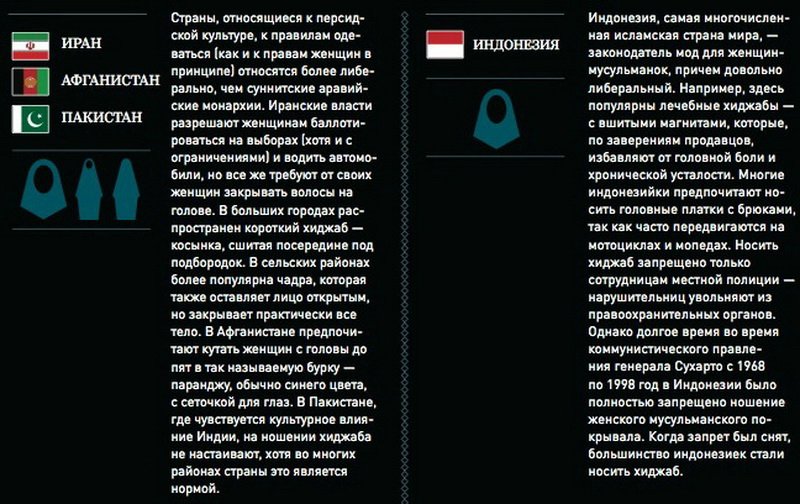Why do Muslim women wear hijab? Why don't all Muslim women wear hijab?
In the name of Allah, the Gracious, the Merciful!
Praise be to Allah, the Lord of the worlds, peace and blessings of Allah be upon our prophet Muhammad, members of his family and all his companions!
The appearance of hair on the genitals, the appearance of wet dreams or menstruation - one of these indicates the child’s coming of age, when he becomes obliged to carry out his instructions and avoid the forbidden.
And it is not necessary that all the signs of adulthood be together; one of the signs is enough. And if there are no such signs, but the child is mentally competent, then upon reaching the age of fifteen, both boys and girls become adults.
As for the obligation to wear a hijab for a girl, although it becomes mandatory upon reaching adulthood, a girl should be taught to wear a headscarf earlier, from childhood, so that later it will not be difficult for her to put it on immediately after coming of age. And the proof for this is the famous hadith: “Tell your children to pray when they are seven years old, and beat them if they do not do so when they are ten. And separate them in different beds”. Abu Dawud 495. The hadith is good. See “Sahih al-Jami’” 5868. And this despite the fact that until adulthood, there is no obligation or sin on the child!
The Messenger of Allah (peace and blessings of Allah be upon him) said: “The pen is lifted from three: from a child until he reaches adulthood; sleeping until he wakes up; and the madman until his mind returns to him". Ahmad 1/104, Abu Daud 4398 and 4402, an-Nasai 3432, Ibn Majah 2041, ad-Darimi 2296, Ibn al-Jarud, al-Bayhaqi 6/57, al-Bazzar 1540. The authenticity of this hadith was confirmed by imams Ahmad, al -Bukhari, Ibn Khuzaima, Ibn al-Jarud, Ibn Hibban, Ibn al-Munzir, al-Hakim, az-Zahabi, Ibn Hazm, Abu Bakr ibn al-'Arabi, Ibn Taymiyya, Ahmad Shakir, al-Albani.
The Standing Committee scholars said: “The guardian of a girl should accustom her to wearing a blanket before she reaches adulthood, so that she gets used to it and it is easy for her to do it.”. See Fataawa al-Lajna 17/219.
As for the specific age at which it should be taught, scientists have expressed different opinions. Someone spoke from the age of seven or at most from the age of ten, based on the above hadith. And some believed that this should be done from the age of nine.
When Sheikh Ahmad an-Najmi was asked about the age at which the hijab is obligatory for a girl, he said, based on the report of ‘Aisha: “When a girl reaches nine years old, she is a woman.”, which should be required from this age.
However, the message from ‘Aisha, on which Sheikh al-Najmi relied, was considered weak by Sheikh al-Albani.
They asked Sheikh Abdul-Muhsin al-Abbad: “My daughter is four years old. She loves to wear an abaya, like her mother. I decided to sew a hijab for her, but one of the brothers reprimanded me. Is he right?
The Sheikh replied: "Not right. She puts it on for a day, then takes it off, this is the behavior of children. However, the fact that she gets used to it, there is no problem with that.”. See Sharh Sunan Abi Daud 32/450.
In a word, let parents teach their daughter to wear a headscarf from the age of seven to ten, so that by the time she reaches adulthood, she will already realize how important the hijab is for a Muslim woman.
Unfortunately, when it comes to teaching a daughter to wear a headscarf, some Muslims have two extremes: some do not tell her to wear a headscarf until she reaches adulthood, while others put a full hijab on her at almost 2-3 years of age. I ask Allah to make it easier for Muslims to raise righteous children!
Imam Ibn al-Qayim said: “The one who neglected the upbringing of his child, leaving him to himself, acted in the worst way towards him! And the corruption of most children comes from their parents due to their negligence towards them and leaving them to learn the duties of religion and the Sunnah. And these children disappear when they are still small.”. See “Tuhfatul-maulud” 229.
And in conclusion, praise be to Allah, the Lord of the worlds!
In April 2010, the spiritual and educational newspaper “As-Salam” conducted a sociological study on the topic “what prevents a woman from wearing a hijab?” Readers lively discussed this topic and sent a large number of SMS messages to the editor with different views on this issue. We think it will be interesting for site visitors to find out what actually prevents women from following Islamic clothing requirements.
People's opinion:
If a woman wants to wear a hijab, nothing will stop her! (8-928…07)
For example, the views of others bother me. They will immediately say: they didn’t get married in that form, but now they decided to wear a hijab... (8-988...87)
Girls and women do not wear hijab, looking at the opinions of others. (8-988…56)
What prevents you from putting on a hijab is self-doubt, weak iman, or hypocrisy. (8-963…08)
Women do not dare to wear a hijab because they look at them askance, they do not hire them for work, and in some places even in schools they are not allowed to wear it, groundlessly claiming that the school is secular. (8-928…93)
I really want to wear a hijab, but it’s very difficult to take this step, I don’t have enough support from my loved ones to help me, so that I fully realize that my action is the right one. (8-928…10)
Lack of religious principles and knowledge. I believe that the parents are to blame for not imbuing the child with a sense of duty and responsibility before the Almighty, and the child, in turn, also does not realize the full importance of observing the norms of religion. And if you put everything together, it turns out that putting on a hijab is hindered by the lack of faith, which so adorns any woman! (8-928…76)
There is nothing stopping a woman from wearing a hijab. Now is not the time like before. The main thing is that she wants it. (8-963…31)
Arrogance gets in the way. And some parents don't allow it. I don’t understand: why don’t they want their daughter to wear a headscarf? They make the mistake of thinking that if they let their hair down, put on makeup, etc., they will look beautiful. Where are their brothers looking?! Well, like father, like son! (8-988…02)
The opinions of your relatives, the curious looks of others, the thoughts that the hijab does not suit you. InshaAllah, I will overcome this and wear a hijab! (8-928…48)
They are ashamed, they may not be fashionable. There are girls who come to university in hijabs and change into open clothes, so as not to be called "old-fashioned". (8-988…24)
What prevents our Dagestan women from wearing a hijab? This is, first of all, the fear of losing the attention of strangers. Of course, many will deny this, but it is true. (8-928…51)
Wearing a hijab is the duty of every Muslim woman. But, unfortunately, many people do not recognize this, saying that the hijab was not worn before, that it was “a fashion that came from Saudi Arabia" Perhaps this is what prevents you from wearing a hijab. But I conducted a survey among my friends: many responded that the hijab does not suit them, that they are not ready for it yet, and that people will start saying all sorts of gossip. (8-960…86)
Unfortunately, a woman wearing a hijab is rarely hired government work. (8-928…89)
All my relatives prevent me from wearing hijab. I perform namaz, because of which no one understands me. And if I wear a hijab, they will stop communicating with me altogether! (8-928…55)
A woman in a hijab is a real woman, but some people condemn them: they say that they are covering themselves with a hijab, while they themselves are sinners. (8-928…72)
First of all, this is the weakness of iman, and secondly, a woman is ready to put on everything that a man likes. If the majority liked the hijab, then women would wear the hijab without a doubt! (8-928…82)
I don’t understand women who, having husbands and children, do not listen to them and do not wear the hijab. It turns out that her husband’s attention is not enough for her and she wants to attract the attention of other men - so they, without realizing it, end up in sin. (8-928…01)
There is nothing more beautiful than a hijab, isn't it? I dreamed of wearing it and decided, despite any obstacles, alhamdulillah! My mother and all my relatives forbid me to wear it, but with the help of Allah I overcome these obstacles - which is what I wish for everyone else! (8-928…94)
Personally, my parents do not allow me to wear the hijab. I tried to explain to them that this is very important. But I don't justify myself. If faith is strong, nothing will stop the girl. We fear people more than the wrath of Allah. (8-928…99)
Today, Muslim women in hijabs are haunted by society: they are fired from their jobs, expelled from schools or universities, and they endure humiliating remarks addressed to them. But what to do, Allah is the judge of these ignoramuses. Dear Muslim women! We can only be patient and wait for Imam Mahdi to appear. (8-928…52)
Lack of a worthy man nearby. At the time of Prophet Adam (peace be upon him), a grain of wheat was the size of ostrich egg. Over time, as grace on earth decreased, the grain also decreased in size. The Messenger of Allah (peace and blessings be upon him) made a dua so that the grain would not disappear completely. The grain has reached our time so small. So the men have “shredded” so much, with the exception of a small number of righteous people, that it is time for all of us to make dua so that the latter does not disappear! Next to a real man, women have no problems with the hijab. (8-988…92)
IN given time Women are prevented from putting on the hijab by Wahhabi troublemakers (followers of Dajjal), who, after wearing the hijab, blow up innocent people. (8-988…40)
If you have your own answer to the question: “why don’t all Muslim women wear the hijab?” You can send your extensive articles to our email address
© AP Photo, Remy de la Mauviniere
We, Muslim women, ask you not to wear the hijab in the name of interfaith solidarity.
Last week, three clergy of different denominations—a rabbi, an Episcopal vicar and a Unitarian pastor—and a male imam stood before the ornate minbar (pulpit) of the Khadijah Islamic Center in West Valley City, Utah. The women smiled widely, their heads covered with bright scarves. Thus, they supported the “Hijab Day” campaign.
The Salt Lake Tribune published a photo of young non-Muslim girls who came to the mosque with their heads covered. KSL TV later reported: “The hijab, the headscarf, is a symbol of modesty and dignity. By wearing a headscarf, a Muslim woman demonstrates that she professes Islam.”
However, for us, ordinary Muslim women born in India and Egypt, the picture we saw in this mosque was just another unpleasant reminder of the well-funded attempts of conservatives to take over modern Muslim societies. Modern conservative movements spread the ideology of political Islam - so-called Islamism. Well-intentioned and complacent ecumenists, in fact, play (together with the press) into their hands, instilling in society that the “hijab” is, in fact, the “sixth pillar” of Islam, along with the traditional “five pillars”: shahada (profession of faith), prayer , fasting, charity and pilgrimage.
Context

Western racism and the Islamic State
7or 12/21/2015Who is to blame for the Islamization of Europe?
Deutsche Welle 12/17/2015Do peaceful radical Islamists have a chance?
Carnegie Moscow Center 12.12.2015You'll never get us
La Repubblica 11/24/2015Meanwhile, we do not consider the “hijab” to be just a symbol of modesty and dignity used by Muslim women.
The new conservatives—Iran, Saudi Arabia, the Afghan Taliban, the Islamic State—are misleading people by claiming that the Arabic word hijab translates to “headscarf.” Meanwhile, it is wrong to equate a religious term with a secular concept. Hijab in Arabic literally means "veil" and also means hiding or separating someone or something. In the Qur'an this word never means a piece of clothing.
In colloquial Arabic, the headscarf is called tarha. In classical Arabic the head is called ra'as and the veil is called gheta'a. As we can see, “hijab” is not translated as “headscarf” in either case. It's time for the media to stop spreading this false interpretation.
The authors of this article, who were born in the 1960s into conservative but open-minded Muslim families (in Egypt and India), were not taught as children that women should cover their hair. It wasn't until the 1980s—following the 1979 Shia revolution in Iran and the rise of lavishly funded Saudi Arabian Sunni preachers—that men and boys began demanding that we cover our heads. However, some women and girls - those who are called “aggressive Muslims” - are now going even further, calling women who, for example, wear a headscarf with skinny jeans, “hijabbed whores.”
Meanwhile, back in the 7th century, many theologians believed that Muslim women were not required to hide their hair. In our time, this opinion was shared by the late Moroccan researcher Fatima Mernissi, as well as by UCLA professor Khaled Abou El Fadl, Harvard professor Leila Ahmed, and Egyptian theologian Zaki Badaoui. (Zaki Badawi), Iraqi theologian Abdullah al Judai and Pakistani theologian Javaid Ghamidi.
Challenge the "hijab"
For us, “hijab” is a symbol of the understanding of Islam that we reject. According to him, women are a sexual temptation for men who, due to their weakness, should be freed from the temptation they experience at the sight of our hair. We are against this approach. This ideology absolves men of blame for sexual assault and requires victims to protect themselves through the use of the “hijab.”
New Muslim Reform Movement - global network fighters for peace, human rights and a secular state - supports the right of Muslim women to choose whether or not to wear a headscarf.
Unfortunately, naive events such as “World Hijab Day” also promote the idea that “hijab” is mandatory for women. The initiative was launched in 2013 by Bangladeshi-American Nazma Khan, who owns a Brooklyn-based headscarf company, and the Shia TV channel Ahlul Bayt, which Canada's University of Calgary cites in announcing its participation in the " World Day hijab." Meanwhile, this TV channel openly claims that women need to wear a “hijab” to avoid “unwanted attention.” World Hijab Day, Ahlul Bayt and the University of Calgary did not respond to our request for comment.
On his website in the “Resources” section, Ahlul Bayt posted a link to an article proving that the entire female body is awrat, that is, it is considered forbidden. This idea leads to deprivation of rights, subordination, silencing, and limits the presence of women in society. Another article from the same section is called: “Ten excuses used by Muslim women who do not wear hijab, and their obvious wrongness.” It proclaims: “Get on the train of repentance, sister, before it passes your station.”
Ultra-conservative Muslim websites and organizations such as VirtualMosque.com and Al-Islam.org are feverishly pushing their interpretation of Islam onto the world, requiring women to cover their heads. Al-Islam.org even published an article entitled “With humor about the hijab,” the author of which mocks Muslim women who do not hide their hair under a headscarf “in the Islamic way.”
Last week, schoolgirls in the Chicago suburb of Vernon Hills donned "hijabs" as part of a "Walk a Mile in Her Hijab" event organized by the school's conservative Muslim Student Association. This sight alarmed us.
Moreover, Muslim lobbying structures promote materials about how “Muslim women who wear the hijab” are oppressed. Some employees of the Council on American-Islamic Relations, which has repeatedly pursued, both legally and through PR methods, American companies that prohibit their employees from wearing the hijab at work, even call their organization the “hijab legal defense fund.”
Now, in the 21st century, most mosques around the world - including in the United States - deny us Muslim women the right to pray without a headscarf. Refusing to let us into the mosque with our heads uncovered is discrimination. Similar to Catholic Church In 1965, after the reforms of the Second Vatican Council, women were allowed to enter churches with their heads uncovered, mosques, too, must declare wearing a headscarf a matter of personal choice if they really want to become “women-friendly” as they themselves claim.
Fortunately, there are people among us brave enough to challenge these rules. In early May 2014, Iranian journalist Masih Alinejad launched a bold new campaign, #MyStealthyFreedom, against the hijab laws imposed by Iran's theocratic leadership when they came to power in 1979. The slogan of this campaign is: “Every Iranian woman has the right to decide for herself whether she needs a hijab or not.”
How to interpret the Quran
The idea that women should cover their hair is based on a misinterpretation of the Qur'an.
According to Arabic dictionaries, hijab means “barrier,” both between men and women and between men. In the Qur'an it appears in verse 33:53, revealed in the fifth year of the Hijra - the migration of the Prophet Muhammad to Medina - when the wedding guests lingered too long in his house. He establishes certain etiquette rules for communicating with the wives of the prophet: “And when you ask them for any utensils, then ask them through the veil (hijab). This is purer for your hearts and their hearts” (hereinafter, quotations from the Koran are given in the translation of I. Krachkovsky). So here, hijab means veil. This word and its derivatives appear in the Qur'an only eight times in the meanings of “barrier” (7:46), “veil” (33:53, 38:32, 41:5, 42:52, 17:45, 19:17) and “separation” from God (83:15).
In the Koran it is not associated with piety. On the contrary, it is characterized by rather negative connotations. So it denotes a real or metaphorical barrier that separates unbelievers - see “our hearts are covered” (41:5), the wall between those in heaven and those in hell (7:46) or “For they are from their Lord on that day they will be separated (mahjaboon)” (83:15). Mahjaboon is a derivative of hijab, which the Saudi Quran translates as “curtained.” In reality, in this case, what we are talking about is that they will not have access to God.
The most famous passage commonly cited in defense of the headscarf is verse 33:59. It reads: “O Prophet, tell your wives, daughters and believing women to draw their veils (jilbab) closer together. This is better because they will be recognized; and they will not suffer any insult. Allah is Forgiving, Merciful!” ( The translation has been amended according to English text, in Krachkovsky - “women of believers” and “better than they are recognized” - approx. lane) According to the dictionaries, jilbab means a long robe, which was customary to wear at that time. This verse encourages women to wear their regular clothing differently, rather than adding a new item to their wardrobe. It does not mention any headscarves.
It is significant that the Saudi Arabian government has distorted the translation of this verse in order to impose on women garments in which they can only see the world with “one eye.” The Saudi official translation is as follows: “O Prophet, tell your wives, daughters and women of the believers to completely cover their bodies with veils (i.e., leave only their eyes or one eye open to see the road). It is better that they are recognized (as free, respected women) and that they do not experience insult. Allah is Forgiving, Merciful!”
If we look at this verse in context, according to Islamic historians, it was revealed in Medina, where the Prophet Muhammad fled from Mecca. Its purpose was to protect Muslim women from the unbridled sexual aggression they faced on the streets of Medina, where men often harassed women, especially slaves. Now we have laws that directly prohibit such things. Countries that do not have such laws should pass them instead of punishing women for the crimes of others.
In addition, when talking about the need to wear a headscarf, they often refer to verse 24:31: “And tell [women] who believe: let them lower their gaze, and guard their members, and let them not show off their jewelry, except what is visible of them, let them throw their veils (khemar) over the incisions on the chest...”
In old Arabic poetry, the word khemar referred to an elegant silk scarf worn by wealthy women. It was attached to the head and thrown behind the back. Such a scarf served to seduce men and demonstrate wealth. Also, keep in mind that this verse was revealed when women were being harassed even on their way to the restroom, and that it teaches how to wear a common traditional item of clothing, rather than imposing a new way of dressing.
It's time to take back our religion
In 1919, Egyptian women took to the streets demanding the right to vote. It was then that they removed the veils, the wearing of which for them was part of the imported Ottoman Empire cultural tradition, and not a religious norm. After this, the veil began to be perceived as a relic of the past.
Later, in the early 1960s, Egyptian President Gamal Abdel Nasser stated in one of his speeches that when he tried to reconcile with the Muslim Brotherhood who tried to kill him in 1954, the leader of the organization presented him with a list of demands, which included : “Egyptian women must be required to wear a hijab.” The audience simply did not understand what this word meant. Nasser then explained that the Brotherhood wanted Egyptian women to wear headscarves, and the audience simply burst out laughing.
As women raised in modern Muslim families and relatives of theologians, we strive to free our religion from the clutches of rigid interpretations. Now, as in our youth, we are again witnessing attempts to turn a ruthless ideology into the only and generally accepted face of Islam. We have already seen in the past what political Islam has done in our native countries and in our new country.
As Americans, we support religious freedom. However, we believe it is necessary to warn people from universities, from the media and from discussion platforms: by wearing the hijab, you are not supporting Islam, but the ideology of political Islam professed by the Iranian mullahs and theologians from Saudi Arabia, the Afghan Taliban and supporters of the Islamic State.
In the name of “interfaith cooperation,” well-meaning Americans allow themselves to be deceived by those Muslims who believe that a woman’s honor lies in her “purity.” Thus, without meaning to, they support the imposition of “hijabs” on all women.
Therefore, please, do not wear a headscarf for the sake of “solidarity” with an ideology that silences us and equates our “honor” with our body. Instead, show moral courage and stand with us against the Islamist ideology that requires us to cover our hair.
Asra Nomani is a former Wall Street Journal reporter and author of Standing Alone: An American Woman's Struggle for the Soul of Islam and co-founder of the Muslim Reform Movement, a new initiative for Muslims and their allies dedicated to the struggle for peace, human rights and a secular state.
Hala Arafa is a journalist who worked for 25 years as an analyst at the Bureau of International Broadcasting and was news editor for the Arabic version of Voice of America.
Published 21/12/2015 15:22I never wrote anything personal about wearing a hijab, because I thought that a lot had been written about it. Sometimes I think this aspect is overemphasized increased attention to the detriment of acquiring Islamic knowledge and worship.
The headscarf is a symbol of a Muslim woman and distinguishes her from other women. Many representatives of other faiths are wary of it or, on the contrary, are trying to understand the essence of wearing a hijab. So many Muslim women have already answered this question that I don’t see much point in adding anything else.
In the seven years that I have been a Muslim and have been practicing Islam, the most frequently asked question is: “Why are you wearing this?”
This is a hijab. Over the years, I have worn both a bandana that covers my hair and a khimar that completely hides my body and face. I like to choose the hijab style that best suits my outfit and mood, finding what makes me most comfortable. My favorite style right now is loose, with lots of draping. And my scarves reflect not so much an ethnic, but a multicultural aspect.
The reason I started wearing hijab was because of my belief in Islamic injunctions. I said the Shahada and became a Muslim in a city where the vast majority of the population wore Islamic clothing. Wearing a hijab or even a niqab was not a problem and I did not feel a negative reaction from others. This was the norm there, and I realized that I needed to do the same.
The verses of the Koran and the hadiths of the Prophet Muhammad (PBUH), as well as the testimonies of his spouses and companions, are known, from which the injunction for women to cover their heads and entire bodies is clearly evidenced. This is what the very first Muslim women did.
Like most women, I have sometimes hesitated about the hijab, but I have never questioned its obligation as prescribed by the Koran. There have been times when I have not been covered because of a job where the employer does not allow Muslim women to wear a head covering, contrary to constitutionally guaranteed freedom of religion in the United States. But I always felt some guilt about not wearing the hijab and felt like I had to go back to it.
In addition, the simple answer that I am a Muslim and wearing a hijab is prescribed by religion does not satisfy many people, and they want to know why I need a hijab, especially since other Muslim women do not always cover their heads.
I cannot answer for other Muslim women and why they do not wear the hijab, I cannot say what they think on this issue. I can’t judge them because I don’t know what their life circumstances are. I can only say what my purpose is and what the advantage of wearing a headscarf is for me.
Modesty. When I am dressed properly, I do not show off the outline of my body to others. People judge me not by my clothes, but by my actions and speeches, how well I do my job and how I interact with others, rather than by whether I am beautiful and up to “fashionable” standards.
From the same point of view, I protect my beauty from prying eyes and save it for my husband. And he knows that he doesn't have to share me with anyone. Increased male attention is not directed in my direction, and this does not make him feel insecure or make me feel disrespected.
I am noticeably different from others because I am Muslim. Most people find this respectful. They see that a woman like me should not be catcalled or made indecent proposals. They understand that you cannot meet me in a bar or nightclub, or even on the street or in the office. There is a certain level of respect when men don't treat me the same as other women around them and assume that I won't be easy prey for them. In fact, I noticed that most of them, and even non-Muslims, treat me more like a gentleman! They open the door for me, give up their seat in the transport and help me when I need it. Overall, I have a lot of respect from others.
Wearing the Muslim headdress reminds me of my responsibilities. I become an even better person when I wear a headscarf because it reminds me of the kind of behavior and level of morality others expect from me. I am less likely to lose my temper and more likely to be kind and compassionate in difficult situations.
In my experience, the hijab is very beneficial. Not only because he guarantees me protection and safety, but I also strive to please the Creator by fulfilling His instructions. I would like to note that my life has become more comfortable thanks to the scarf.
Contrary to what many people think about my obligation to wear the hijab (and so-called suffering), I do not experience discomfort or infringement of my rights. The headscarf opens up new possibilities for me and is my personal choice, and not a consequence of pressure from family or anyone else.
I am an independent American Muslim woman with high degree personal freedom and self-realization. The scarf has never been an obstacle for me to achieve my goals, but has made my life more comfortable and helped me interact harmoniously with loved ones and society.
What suits a Muslim woman? Islam requires women to cover their bodies except their faces and hands. IN different regions and historical and cultural traditions, the function of an ideologically verified outfit - the hijab - is performed by the khimar, niqab, veil and their variations.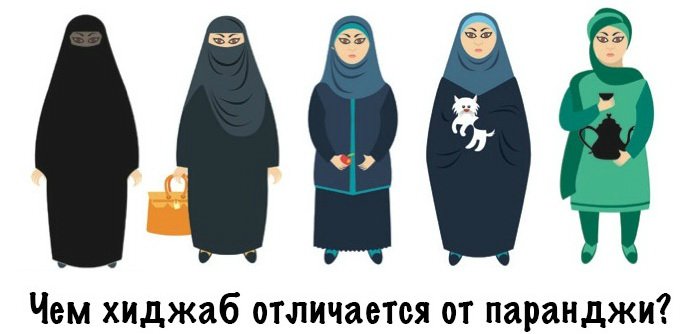 The traditional Muslim costume, which involves almost complete coverage of a woman’s body, is known all over the world. However, despite the completely pious reason for its use in Everyday life- protection of chastity and manifestation of modesty and sanctity of the female body, residents and government officials various countries perceive this image differently on the territory of their state. There is also no consensus among Muslim women themselves whether the hijab infringes on their rights or not.
The traditional Muslim costume, which involves almost complete coverage of a woman’s body, is known all over the world. However, despite the completely pious reason for its use in Everyday life- protection of chastity and manifestation of modesty and sanctity of the female body, residents and government officials various countries perceive this image differently on the territory of their state. There is also no consensus among Muslim women themselves whether the hijab infringes on their rights or not. The body of a woman in Islam is a sacred object that requires reverent treatment. The Koran indicates that a person in general, and not just his fair half, must strictly protect “aurat” from the eyes of strangers, i.e. intimate parts of the body. The word "awrat" comes from the word "al "awraa", which means a flaw or defect. For a man, the aurat is the area of the body from the navel to the knee inclusive. This is what he should always keep closed, regardless of whether he is standing in prayer or engages in daily activities.For a woman, the Koran introduces stricter rules: her whole body is awrah. 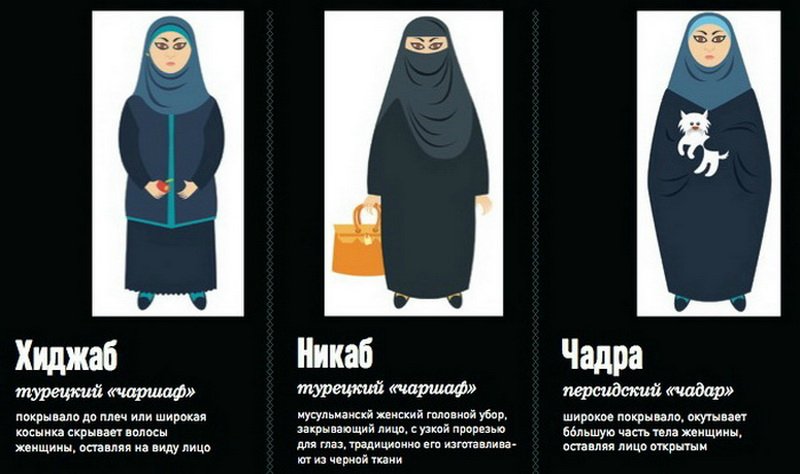
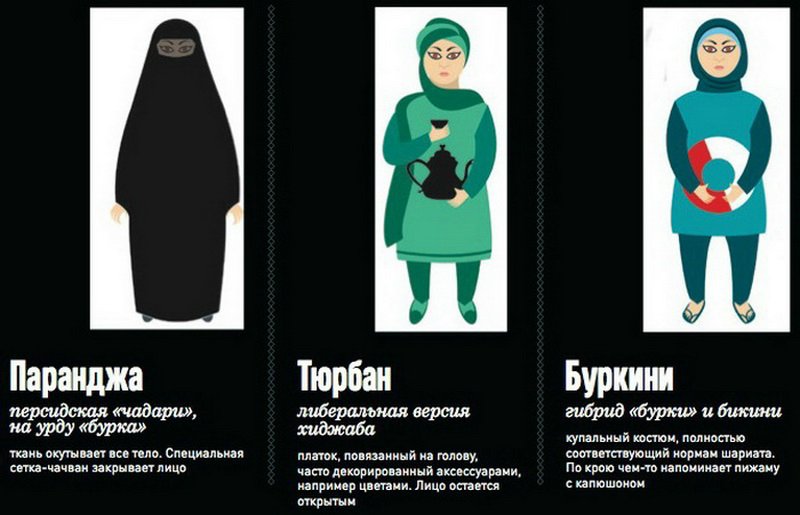 Hijab translated from Arabic as “veil” or “veil”. This is how they designate any women's clothing, meeting the requirements of Sharia, and in Western societies - the traditional Islamic women's headscarf.
Hijab translated from Arabic as “veil” or “veil”. This is how they designate any women's clothing, meeting the requirements of Sharia, and in Western societies - the traditional Islamic women's headscarf.
Abaya- a long traditional Arabic dress with a loose cut, without a belt. Designed to be worn in in public places. In some Arab countries compulsory clothing for Muslim women.
Himar- a head cape, the style, length and method of wearing which may vary. Khimar in the form of a headscarf is common in the Middle East, Turkey, among European Muslim women and is the softest form of hijab.
Veil- a light blanket of white, blue or black color that covers the entire body, including the head. Its upper part may have an additional piece of light fabric covering the face. It is a traditional Iranian version of Islamic women's clothing.
Niqab(from the Arabic "mask") - a headdress that hides a woman's hair and face, leaving only a slit for the eyes. Typically black. Sometimes a kind of veil is attached to it. As with the hijab, there is big number options for the shape of the niqab and its combinations with other items of Islamic women's costume. Distributed in the Gulf countries, Yemen, and southern Pakistan.
Burka- a blanket covering the body with the head, with a mesh-covered slit for the eyes. In fact compulsory for women in most of Afghanistan and northwestern Pakistan. Usually she blue color and is made of cheap synthetic material.
Burqa It is a long robe with false sleeves. It hides the entire body, leaving a slit for the eyes, covered with a rectangular dense mesh of chachwan. The name comes from the Persian term "faraji", which originally meant wide outerwear. The tradition of wearing a burqa became most widespread in late XIX- early 20th century in Central Asia.
Al-amira - modern version Khimara. It consists of two components: a cotton cap, over which a head scarf is then tied. Sometimes, instead of a scarf, such a hat comes with a “pipe” made of the same fabric.
Sheila- a long rectangular scarf wrapped around the head. The ends are hidden or lie along the shoulders. One of the freest options for khimar. Distributed in the Gulf countries.
Burkini- a swimsuit that meets Shariah requirements. The cut is close to pajamas, covering the entire body except the feet, palms and face. Has a hood that fits tightly on the head. There are options for other sports.
European countries are fighting unconscionably to ban Muslim women from wearing the burqa. Life is difficult for Muslim women outside the Muslim world.
Yes, yes, for example, in Western countries, demand that they be allowed to take passport photos with their faces covered. And what? They are forbidden! They say you have to bare your face in front of the photographer! And this is an intimate moment. In a Muslim family, if they take a photo, it is in extremely rare cases. And only for "internal use".
The same problems exist in eastern countries who have chosen the secular path of development. In Tatarstan, for example, about one and a half thousand Muslim women live without an identity card at all, because they are not ready to “be naked” in front of a photographer. Here are photographs of women from Muslim countries wearing the above-mentioned clothes.
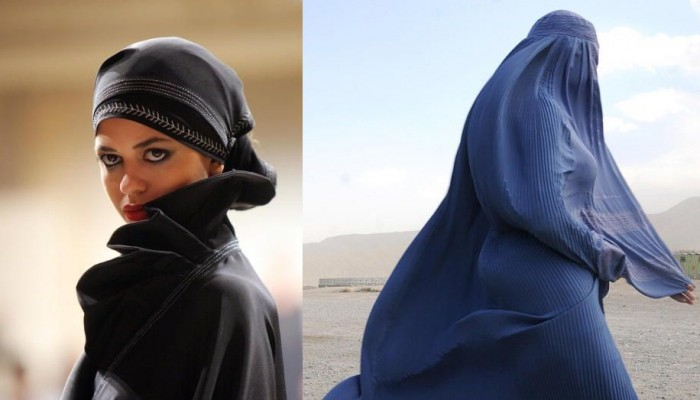
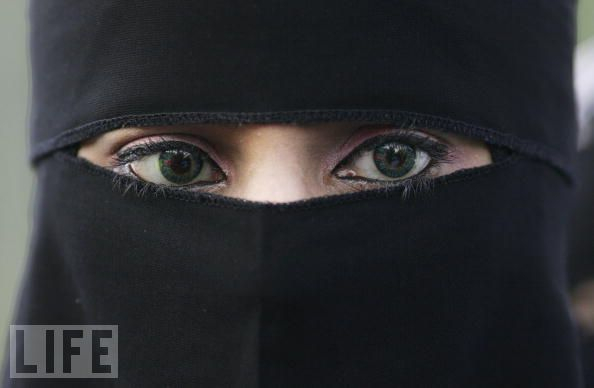
1. Great Britain. Wearing a hijab by a woman is one of the main provisions of Islamic law - Sharia. 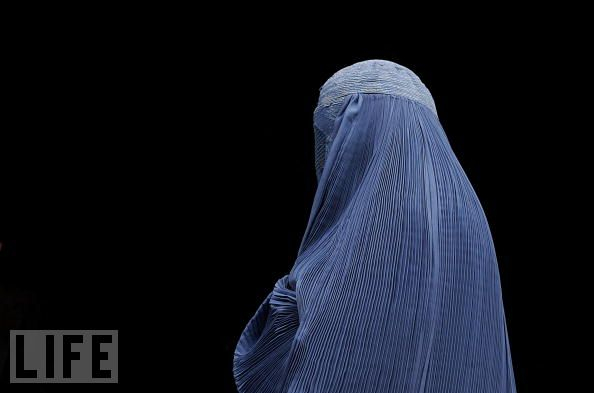
2. Afghanistan. Hijab is not just a headscarf, it is clothing that fully complies with Shariah standards. Not tight, long, not provocative. 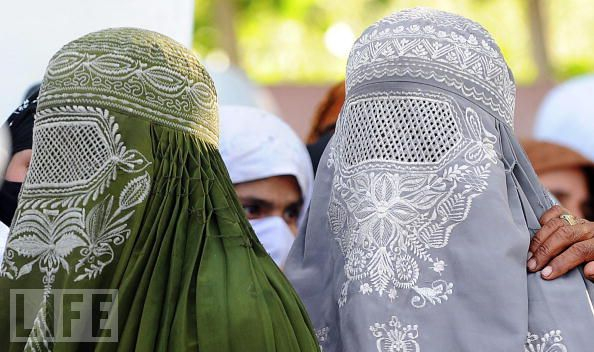
3. Pakistan. Often decorated with handmade embroidery. 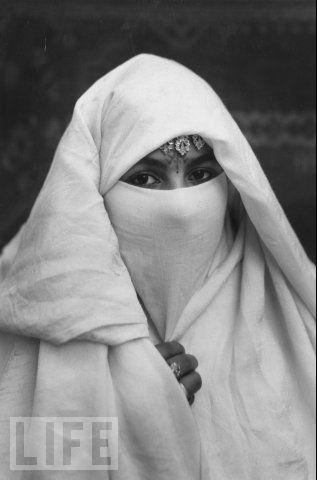
4. Morocco. Wearing clothing that hides the face is practiced by various reasons, among them: local traditions and customs, protecting the face from sand, dust, bright light (in hot countries). 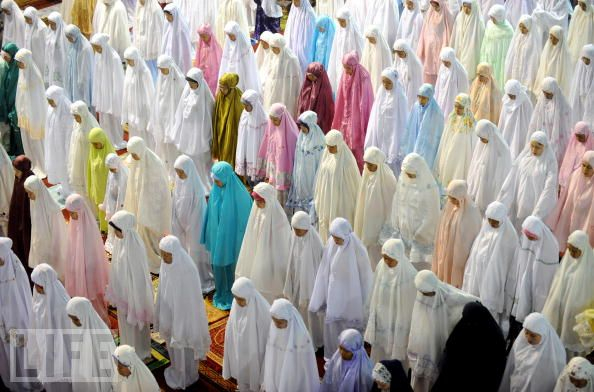
5. Indonesia. Yes, you won’t find this in Moscow. 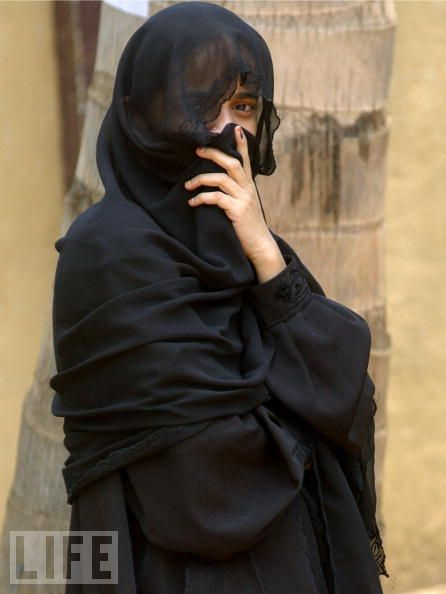 6. India. The simplest niqab consists of a headband (a strip of thick fabric tied on the forehead with ribbons at the back) and two rectangular scarves sewn to the headband. One scarf is sewn to the headband from below and only along the edges - it should fall onto the face in such a way that there is a slit for the eyes.
6. India. The simplest niqab consists of a headband (a strip of thick fabric tied on the forehead with ribbons at the back) and two rectangular scarves sewn to the headband. One scarf is sewn to the headband from below and only along the edges - it should fall onto the face in such a way that there is a slit for the eyes.
The second large scarf is sewn on without any slits - it should completely cover the woman’s hair. Sometimes another piece of light transparent fabric is attached to the same headband - it forms a veil and covers the eyes. 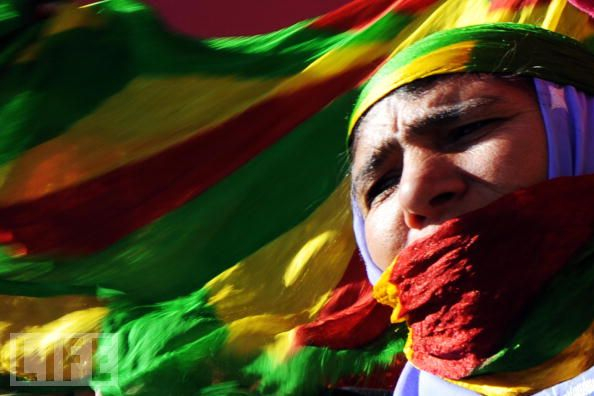
7. Türkiye 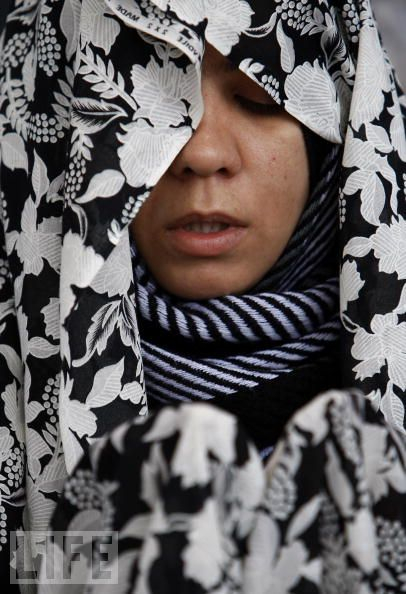
8. Iran 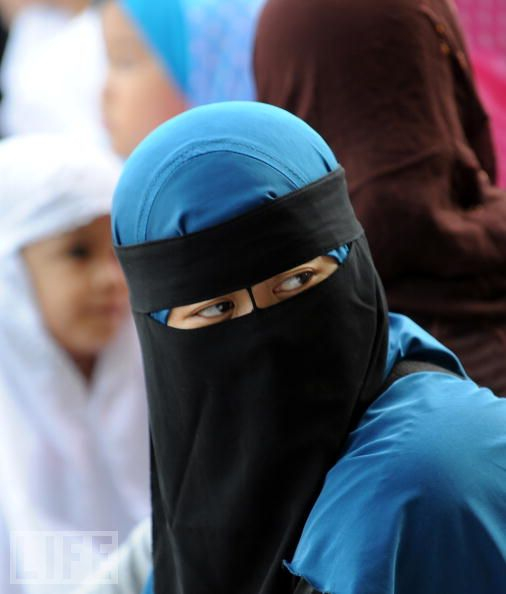
9. Philippines 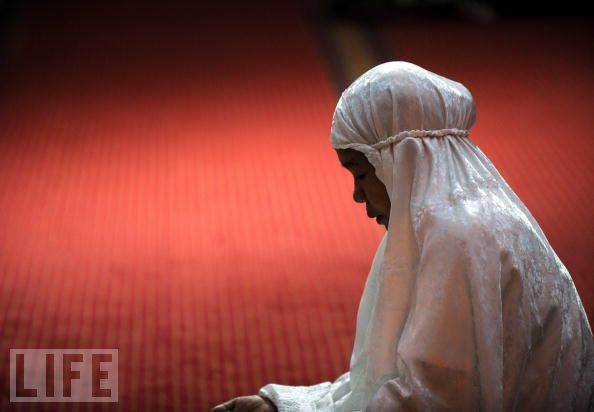
10. Indonesia 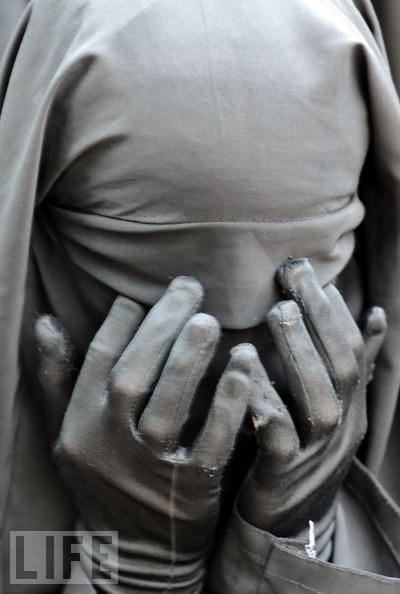
11. Pakistan 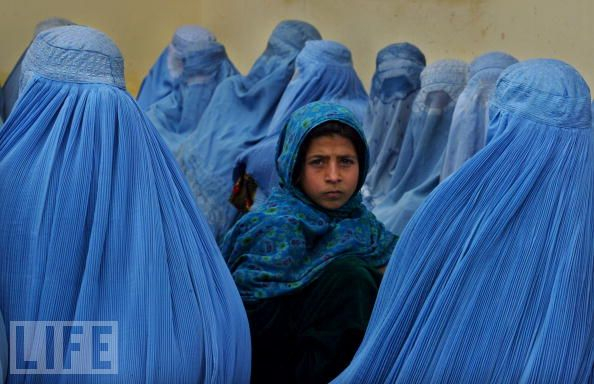
12. Afghanistan 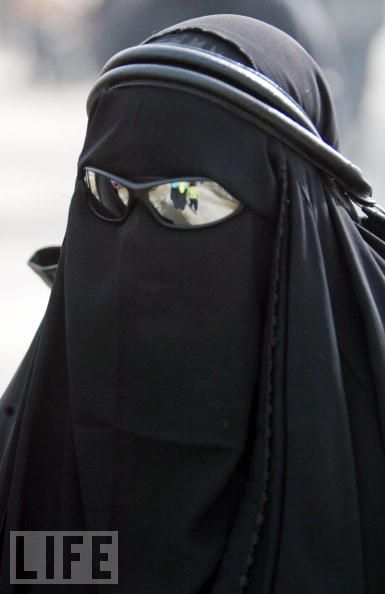
13. Iraq 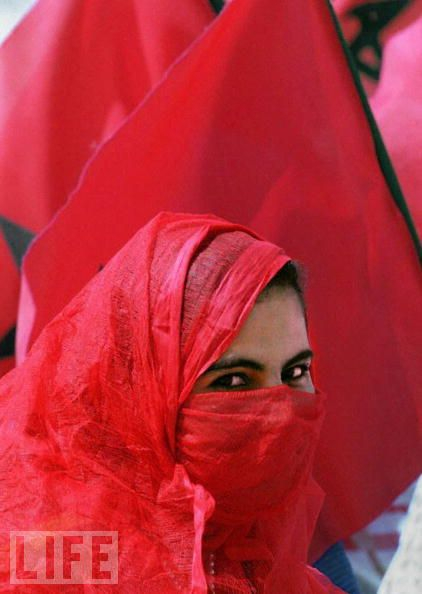
14. Morocco 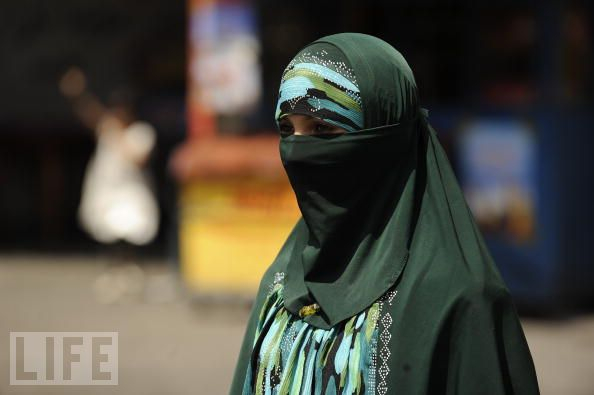
15. China 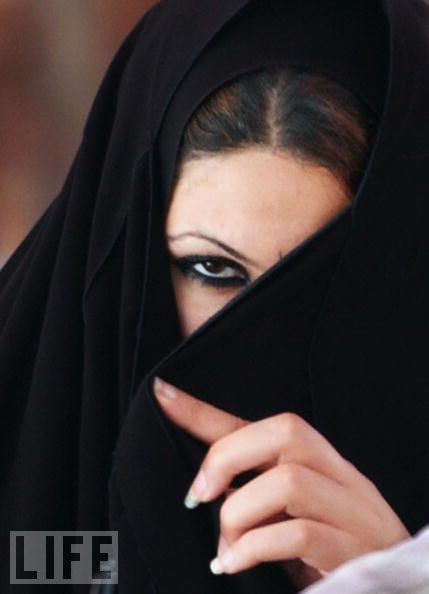
16.Iraq 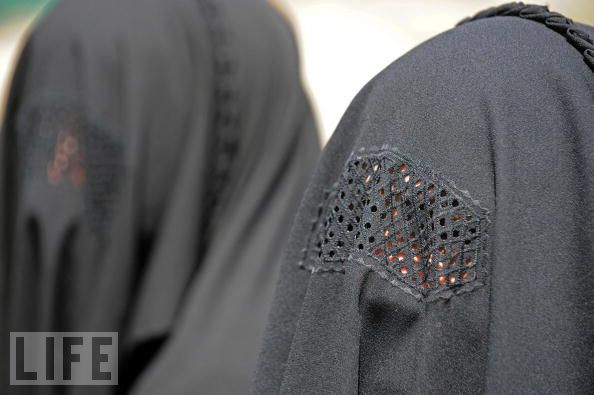
17.Kashmir 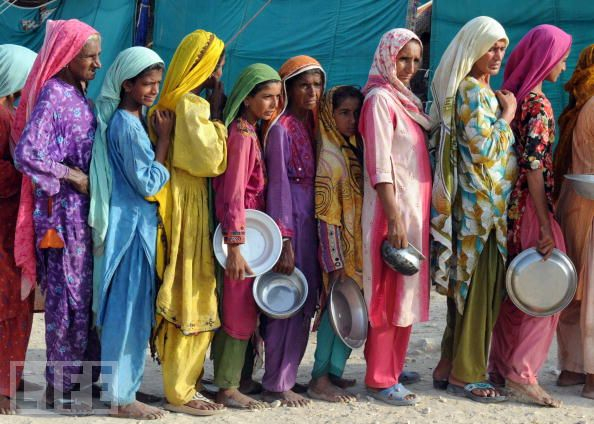
18. Pakistan 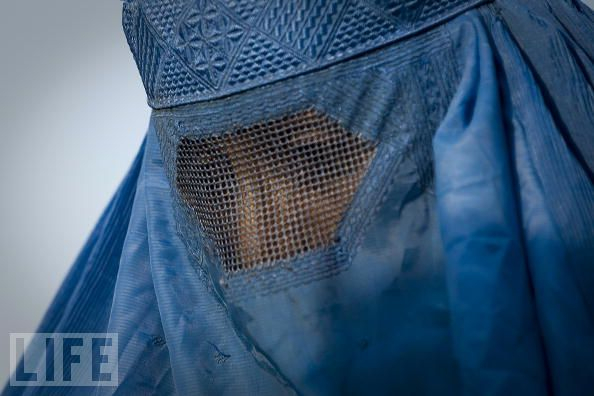
19. Afghanistan 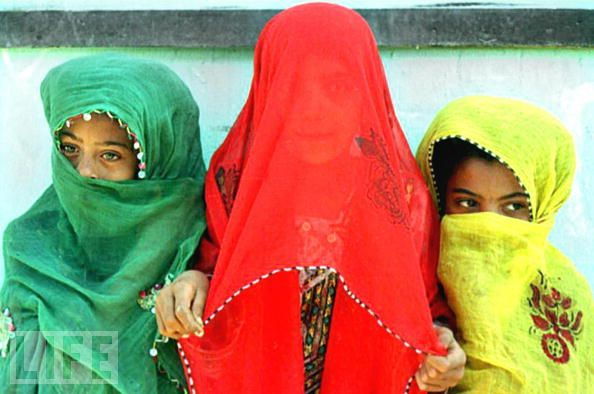
20. Iran 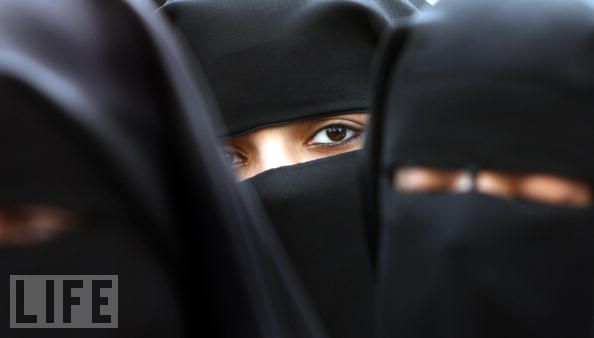
21. Palestine 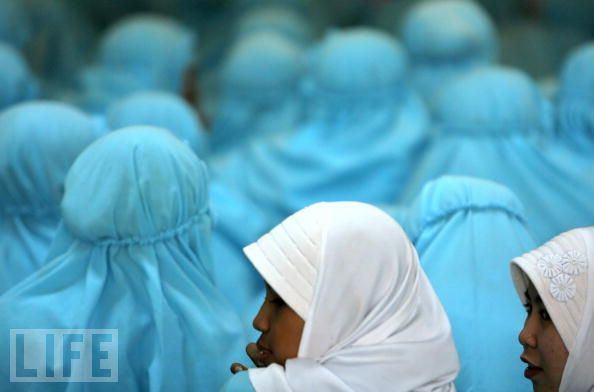
24.Indonesia 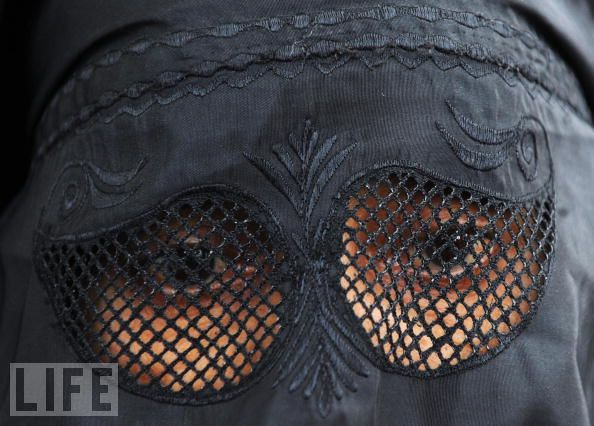
25. Kashmir 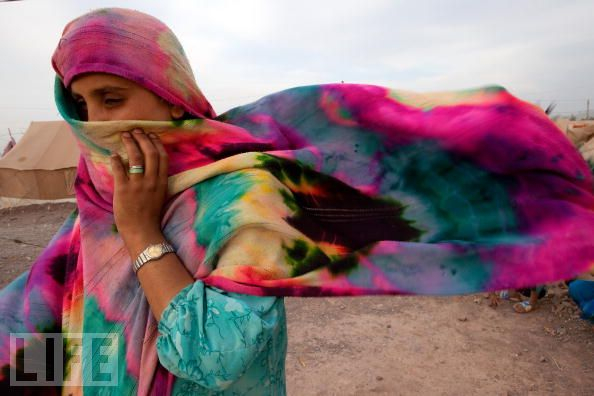
26. Pakistan 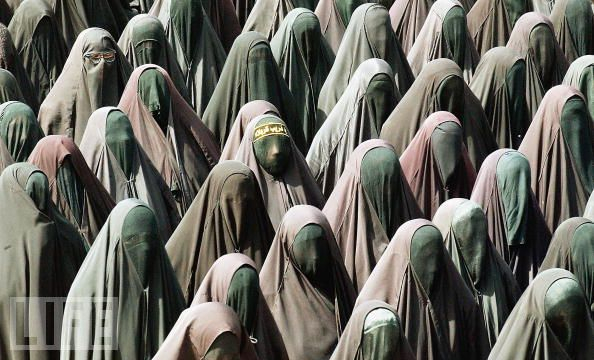
26. Paris. France 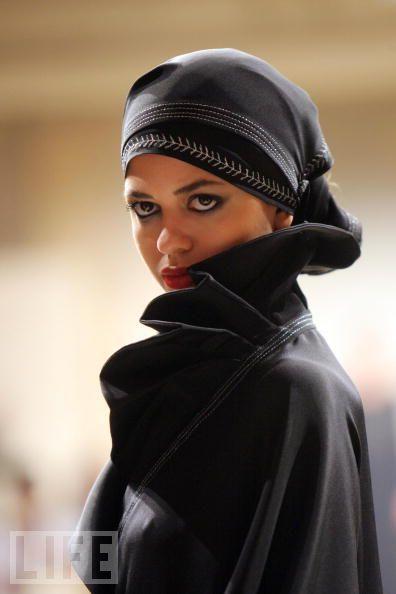
27. Iraq 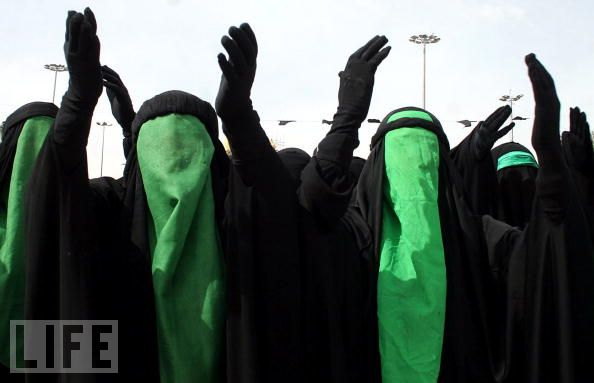
28. Afghanistan 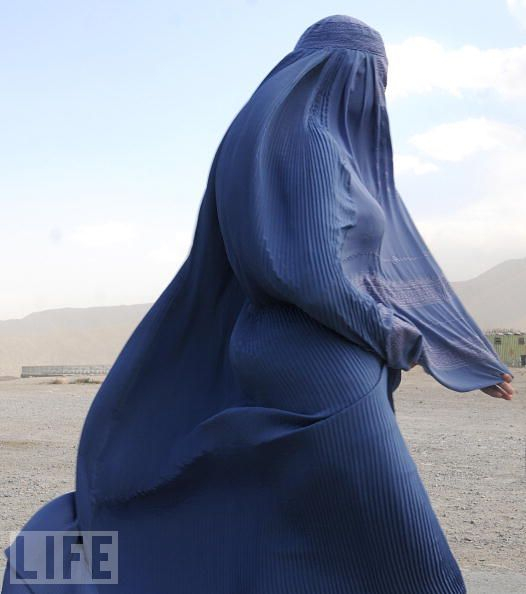
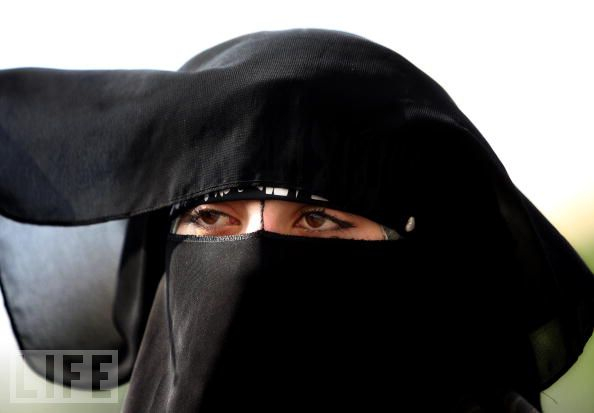
29. Look at the look: expressive and attractive. 